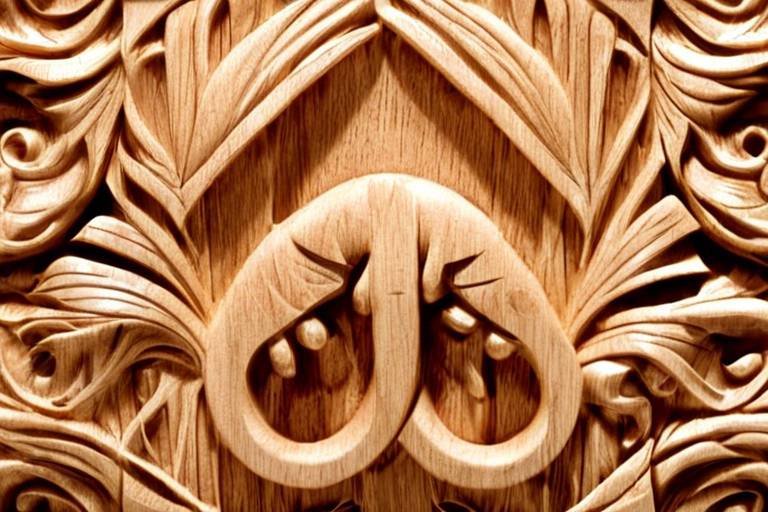Get Crafty with Miniature DIY Wooden Dollhouses
Welcome to the enchanting world of miniature DIY wooden dollhouses, where your imagination can run wild and your creativity can take center stage! Crafting a dollhouse is not just about assembling wood; it's about building a dream. Each tiny room, every little piece of furniture, and all the intricate details come together to create a charming universe that reflects your personality and style. Whether you’re a seasoned crafter or a curious beginner, this journey into the world of dollhouses promises to be both exciting and rewarding.
Have you ever thought about how a simple dollhouse can transport you to another world? Picture this: a cozy Victorian home with floral wallpaper, or perhaps a sleek modern loft adorned with minimalist decor. The choices are endless, and the best part is that you are the architect of your own miniature paradise. In this article, we will guide you through the essential steps of creating your own captivating dollhouse masterpiece, from selecting the right design and gathering materials to decorating your finished creation.
So, are you ready to dive in? Let’s roll up our sleeves and explore the delightful process of crafting your very own miniature wooden dollhouse. It’s not just a project; it’s an adventure waiting to unfold! With the right tools, some creativity, and a sprinkle of patience, you’ll soon find yourself immersed in a world where the only limit is your imagination. Whether you want to build a quaint cottage or a grand mansion, this guide will help you every step of the way.
As we embark on this creative journey, remember that the joy of crafting lies not only in the final product but also in the process itself. Each cut, each joint, and each paint stroke adds to the story of your dollhouse. So, grab your crafting gear, and let’s get started on this enchanting adventure together!
- What materials do I need to start building a dollhouse? You will need wood, glue, paint, and various tools like a saw and a ruler.
- Can beginners build a dollhouse? Absolutely! There are kits available that are perfect for beginners.
- How long does it take to build a dollhouse? The time can vary greatly depending on the complexity of the design, but it can take anywhere from a few days to several weeks.
- Where can I find miniature accessories? Miniature accessories can be found online, at craft stores, or you can even make your own!
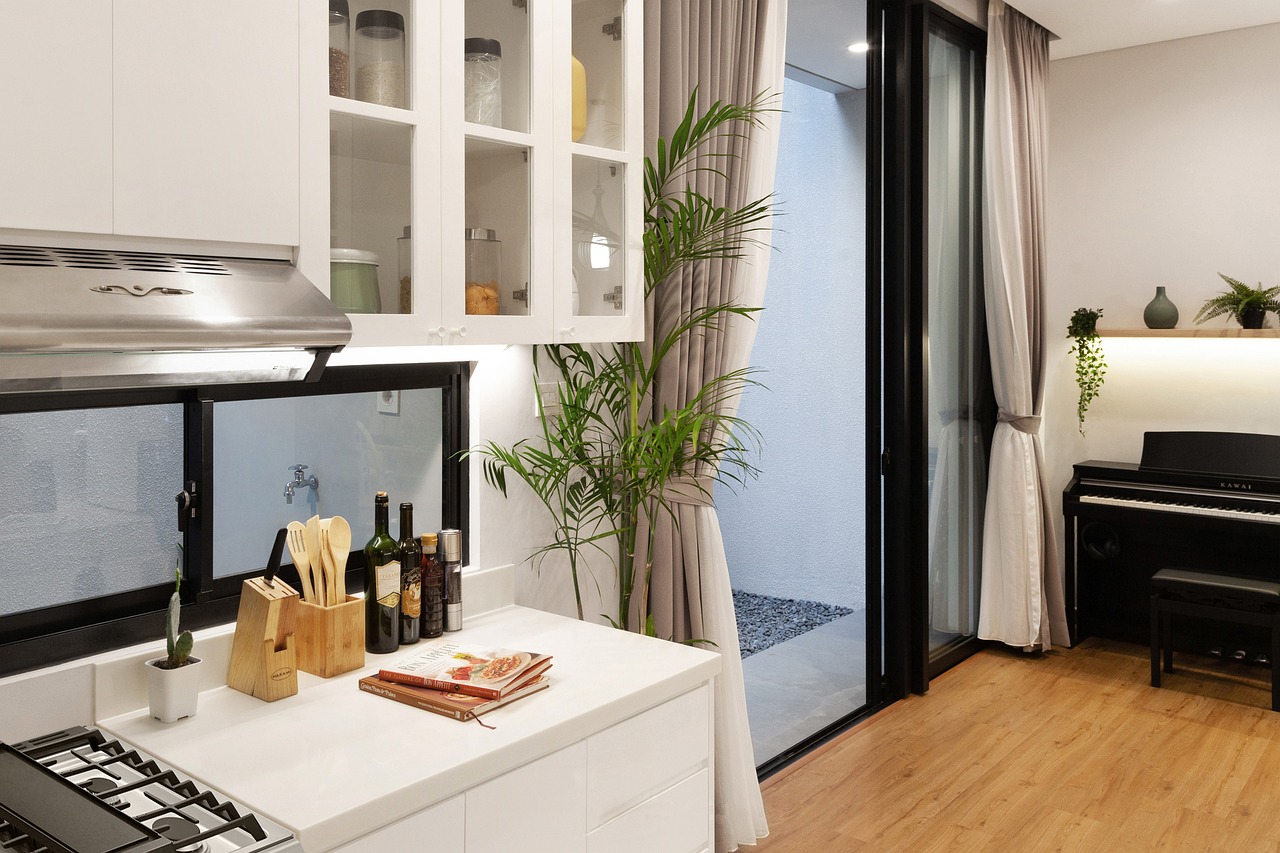
Choosing the Right Design
When it comes to creating your very own miniature DIY wooden dollhouse, the design you choose plays a pivotal role in the entire crafting experience. Imagine standing in front of a blank canvas, the possibilities are endless! From the ornate elegance of Victorian styles to the sleek lines of modern minimalist aesthetics, your choice of design will not only reflect your personal taste but also challenge your creativity and skills.
Before diving into the world of dollhouse construction, take a moment to envision what you want your miniature masterpiece to look like. Are you drawn to the classic charm of a cottage with its cozy nooks and crannies, or do you prefer a contemporary loft with open spaces and chic furniture? Each design style comes with its own unique features and challenges, so it’s essential to pick one that resonates with you.
To help you make an informed decision, consider the following aspects:
- Skill Level: Some designs may be more complex than others. If you’re a beginner, you might want to start with a simpler structure that provides a solid foundation for your skills.
- Space: Think about where you plan to display your dollhouse. A larger design may require more space, while a compact model can fit snugly on a shelf.
- Theme: Do you have a particular theme in mind? Whether it’s a rustic farmhouse or a trendy urban apartment, your theme will guide your design choices.
Once you’ve narrowed down your options, sketching out your ideas can be incredibly beneficial. Grab a piece of paper and start doodling! This doesn’t have to be a masterpiece; just a rough sketch can help you visualize the layout and features you want. Think about the rooms you’d like to include, the color palette, and any unique architectural details that will make your dollhouse stand out.
Don’t forget to gather inspiration from various sources. Browse through magazines, explore online galleries, or even visit local craft stores to see what catches your eye. You might stumble upon a design element that sparks your imagination! Additionally, consider joining online communities or forums dedicated to dollhouse enthusiasts. These platforms can offer a treasure trove of ideas, tips, and support from fellow crafters.
In conclusion, choosing the right design for your miniature DIY wooden dollhouse is an exciting first step that sets the tone for your entire project. By considering your skill level, available space, and personal themes, you can select a design that not only challenges you but also brings you immense joy as you watch it come to life. So grab your sketchbook and start dreaming big—your enchanting dollhouse awaits!

Essential Tools and Materials
Before diving into the exciting world of miniature DIY wooden dollhouses, it's crucial to gather the right tools and materials. Think of this phase as setting the stage for a grand performance; without the right props, your masterpiece might not shine as brightly. The tools you choose will dictate not only how smoothly your project goes but also the level of detail you can achieve. So, let’s explore what you’ll need to get started.
First up, you’ll need some basic tools. A craft knife or a small saw is essential for cutting wood pieces to the desired shape. Precision is key here, so consider investing in a high-quality blade. Additionally, a ruler and pencil will help you measure accurately and mark your cuts. Don’t forget about a clamp to hold pieces together while the glue dries; this little gadget can save you a lot of headaches!
Next, let’s talk about adhesives. Wood glue is a must-have for bonding wood pieces, but you might also want to keep some super glue handy for quick fixes or attaching smaller elements. A hot glue gun can also be a lifesaver, especially for attaching decorations or furniture inside your dollhouse.
When it comes to materials, the type of wood you choose can significantly impact the final look of your dollhouse. Here are some popular options:
| Wood Type | Characteristics | Best For |
|---|---|---|
| Pine | Lightweight, easy to cut, and affordable | Beginners, general construction |
| Basswood | Soft, fine grain, ideal for detailed work | Intricate designs, detailed features |
| Birch | Strong, durable, and smooth finish | High-quality builds, long-lasting projects |
Choosing the right wood is like picking the right canvas for a painting; it can make all the difference in how your project turns out. Additionally, consider using some eco-friendly materials if you want to minimize your environmental impact. Bamboo or reclaimed wood can be great sustainable options that also add character to your dollhouse.
Finally, let’s not forget about finishes and treatments. A good paint or stain can transform your dollhouse from a simple structure to a stunning work of art. Sealants are also important to protect your creation from wear and tear. The right finish can enhance the natural beauty of the wood while providing a protective layer.
In summary, preparing your tools and materials is a vital step in your dollhouse journey. With the right equipment in hand, you’ll be set to unleash your creativity and craftsmanship, turning a stack of wood into a charming miniature home. So gather your supplies and get ready to embark on this delightful crafting adventure!
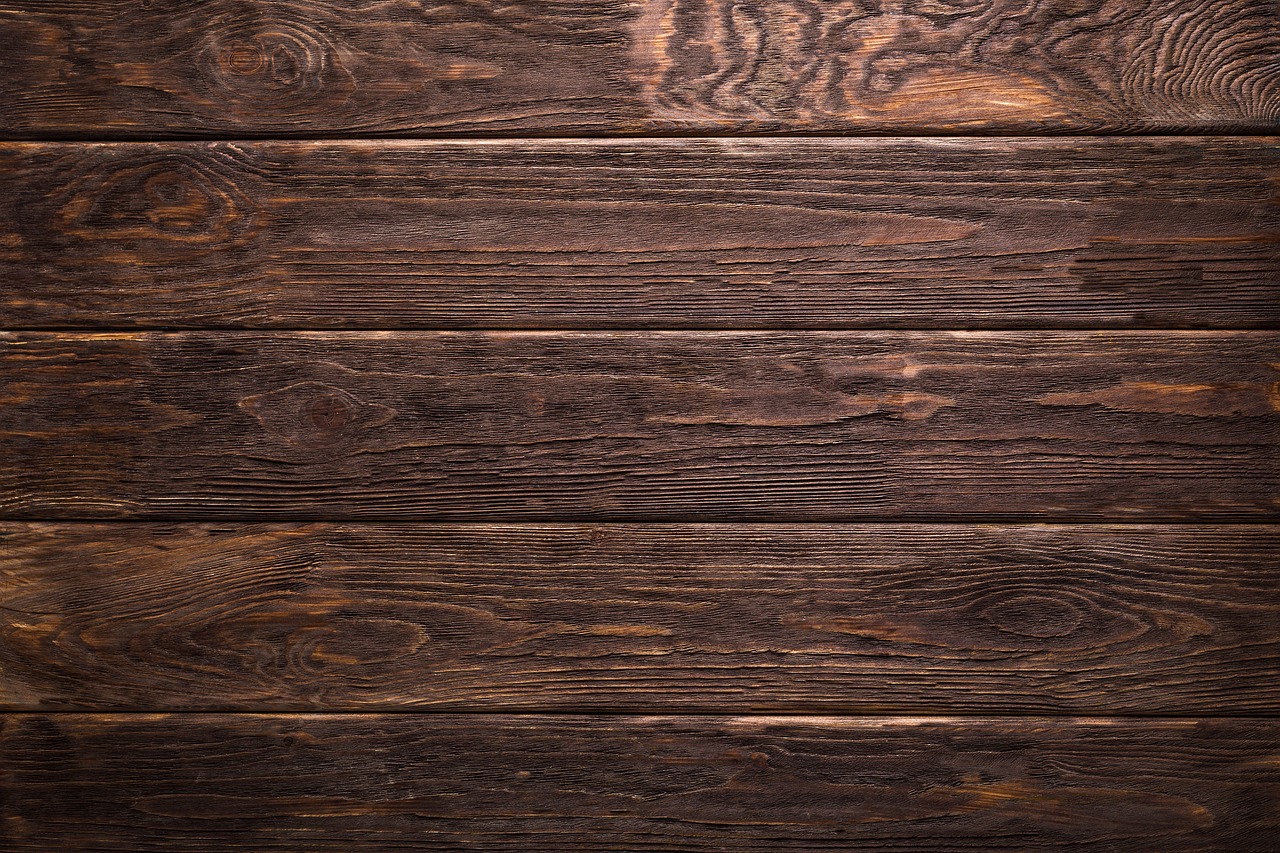
Wood Types for Dollhouses
When embarking on your journey to create a stunning miniature dollhouse, one of the most important decisions you'll make is choosing the right type of wood. The wood you select not only affects the durability of your dollhouse but also its overall aesthetic appeal. Different types of wood offer unique characteristics, making them suitable for various styles and techniques. So, let’s dive into the world of wood types and discover which ones are the best fit for your project!
One of the most popular choices among crafters is plywood. Known for its strength and versatility, plywood comes in various thicknesses, making it an ideal option for both the walls and floors of your dollhouse. It’s relatively inexpensive and can be easily cut and shaped, allowing for intricate designs. However, keep in mind that plywood may require a bit more finishing work to achieve a smooth surface, especially if you want to paint or stain it.
Another excellent option is medium-density fiberboard (MDF). This engineered wood product is made from wood fibers bonded together with resin, resulting in a dense and smooth material that’s perfect for detailed cutting and intricate designs. MDF is great for creating a polished look, as it holds paint and finishes exceptionally well. However, it’s essential to note that MDF is heavier than plywood, which may be a consideration if you plan to move your dollhouse around frequently.
If you’re looking for something a bit more traditional, consider using basswood. This softwood is favored for its fine grain and light weight, making it easy to work with and perfect for delicate details. Basswood is often used for intricate carvings, so if your dollhouse design includes ornate features, this could be your go-to choice. However, it’s worth mentioning that basswood can be more susceptible to warping if not properly sealed.
For those who want to add a touch of luxury to their dollhouse, hardwoods like oak or cherry can elevate your project to a whole new level. Hardwoods are known for their durability and rich colors, providing a stunning finish that can make your dollhouse stand out. While they can be more expensive and challenging to work with than softer woods, the results can be breathtaking. Imagine a dollhouse with beautiful oak floors and cherry wood accents; it’s sure to be a conversation starter!
When selecting wood for your dollhouse, it’s essential to consider the scale of your project and the level of detail you wish to achieve. Here’s a quick reference table to help you compare some common wood types:
| Wood Type | Durability | Weight | Ease of Work | Finish Quality |
|---|---|---|---|---|
| Plywood | High | Medium | Easy | Good |
| MDF | High | Heavy | Easy | Excellent |
| Basswood | Medium | Light | Very Easy | Good |
| Hardwoods (e.g., Oak, Cherry) | Very High | Heavy | Moderate | Excellent |
Ultimately, the choice of wood will depend on your personal preferences, budget, and the specific requirements of your dollhouse design. Don’t forget to consider how each type of wood will respond to finishing techniques, as this can significantly impact the final look of your miniature masterpiece. With the right wood in hand, you’re one step closer to crafting a dollhouse that’s not only a joy to build but also a stunning display piece!
- What is the best wood for beginners? - Plywood and MDF are excellent choices for beginners due to their ease of use and availability.
- Can I mix different types of wood in my dollhouse? - Absolutely! Mixing wood types can add visual interest and character to your dollhouse.
- How do I prevent warping in my wood? - Ensure that your wood is properly sealed and stored in a climate-controlled environment to minimize warping.
- What finishes work best on MDF? - Paint and water-based stains are ideal for MDF, as they adhere well and provide a smooth finish.
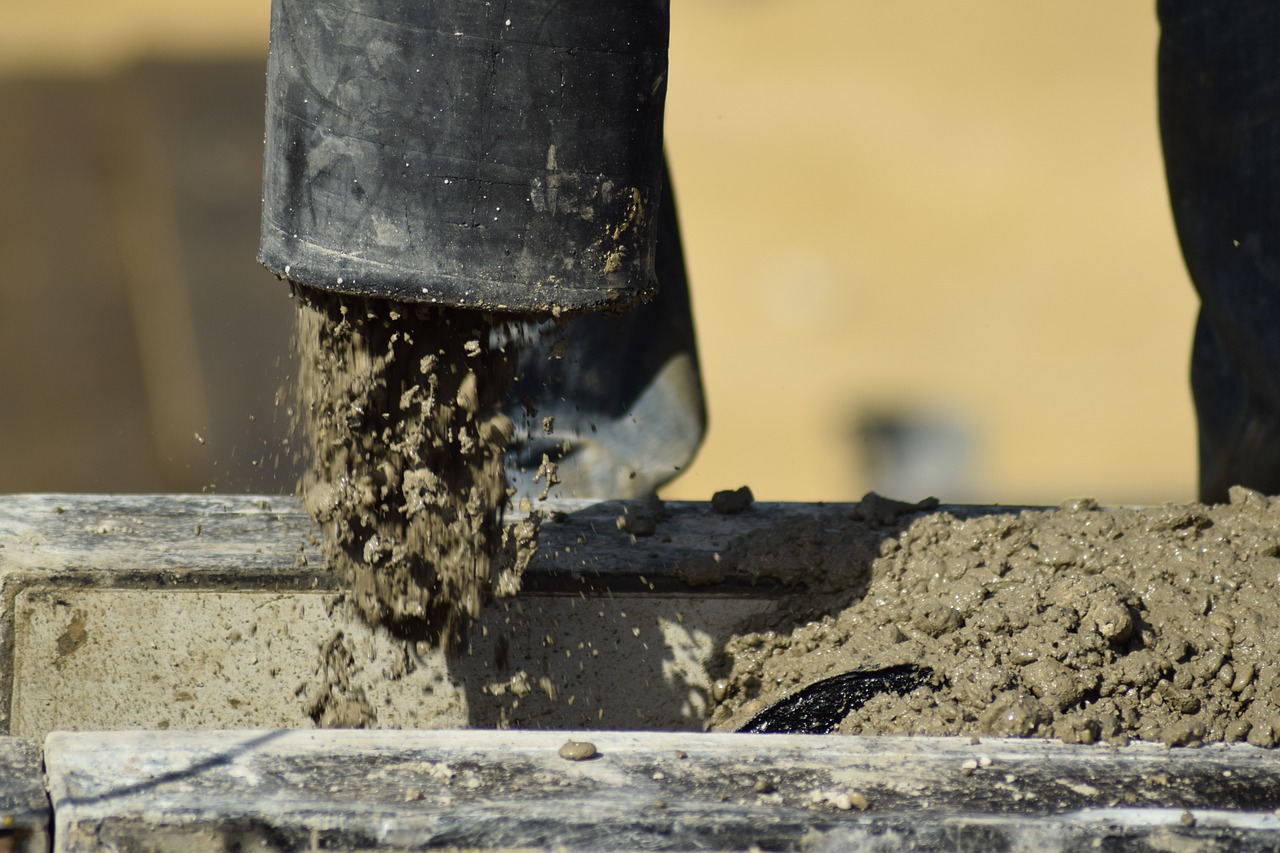
Finishes and Treatments
When it comes to your miniature DIY wooden dollhouse, the you choose can make all the difference. Not only do they enhance the aesthetic appeal of your creation, but they also provide essential protection to the wood, ensuring your masterpiece stands the test of time. Think of finishes as the icing on the cake; they bring everything together and elevate the overall look of your dollhouse.
One of the most popular options for finishing your dollhouse is paint. A fresh coat of paint can transform a plain structure into a vibrant, eye-catching piece. Whether you prefer bold colors or soft pastels, paint allows for endless creativity. However, it's crucial to select a paint that is suitable for wood and is free from harmful chemicals, especially if you plan to display your dollhouse in a child's play area.
Another fantastic option is staining, which enhances the natural beauty of the wood grain. Stains come in various shades, allowing you to achieve a rustic look or a sleek modern finish. The process of staining is relatively simple: apply the stain with a brush or cloth, let it sit for a few minutes, and then wipe off the excess. This method not only adds color but also protects the wood from moisture and wear.
For those looking to add a layer of durability, consider using sealants. Sealants act as a protective barrier, preventing damage from water, heat, and scratches. They come in different forms, including sprays, brushes, and wipes. Applying a sealant after painting or staining will ensure that your dollhouse remains beautiful and intact for years to come. Just remember to choose a sealant that is compatible with your chosen finish.
It's also worth mentioning that there are eco-friendly options available for those who are environmentally conscious. Many brands now offer water-based paints and stains that are low in volatile organic compounds (VOCs). These products not only protect the environment but also provide a safe crafting experience. When selecting your finishes, look for labels that indicate sustainability and safety.
In summary, the finishes and treatments you select for your dollhouse can significantly influence its final appearance and longevity. Whether you opt for paint, stain, or sealant, each choice brings its own unique charm. So, take your time to explore your options, and don't be afraid to experiment! After all, your dollhouse is a reflection of your creativity, and the right finish can make it truly shine.
- What type of paint is best for a wooden dollhouse? Look for water-based acrylic paints that are safe for wood and low in VOCs.
- Can I use regular household paint on my dollhouse? While you can, it's better to use paints specifically designed for crafts or wood to ensure durability.
- How do I apply a sealant? Clean the surface, apply the sealant with a brush or spray, and let it dry according to the manufacturer's instructions.
- Are there eco-friendly finishes available? Yes, many brands offer eco-friendly paints and stains that are safe for the environment.

Eco-Friendly Options
In today's world, where sustainability is becoming increasingly important, crafting your miniature wooden dollhouse can be a delightful way to express your creativity while being kind to the planet. When considering , the first step is to choose the right materials. Opting for sustainable wood sources, such as bamboo or reclaimed wood, can significantly reduce your ecological footprint. These materials not only provide a unique aesthetic but also contribute to environmental conservation.
Furthermore, when selecting finishes for your dollhouse, look for non-toxic paints and stains. Many brands now offer eco-friendly products that are free from harmful chemicals, ensuring that your crafting space remains safe for you and your family. For instance, natural oils and water-based paints are excellent choices that enhance the beauty of the wood without compromising air quality. By using these environmentally conscious options, you can create a stunning dollhouse that not only looks beautiful but also promotes a healthier planet.
Another aspect to consider is the use of recycled materials. Imagine transforming old buttons, fabric scraps, or even discarded cardboard into charming miniature accessories for your dollhouse. This not only adds a personal touch but also keeps waste out of landfills. You can create everything from tiny rugs to wall art, giving your dollhouse a unique flair while practicing upcycling.
To summarize, here are some key eco-friendly options to consider for your dollhouse project:
- Wood Choices: Bamboo, reclaimed wood, and certified sustainable wood.
- Finishes: Non-toxic paints, natural oils, and water-based stains.
- Recycled Materials: Use old buttons, fabric scraps, and cardboard for accessories.
By thoughtfully selecting your materials and finishes, you can enjoy the process of building your dollhouse while contributing positively to the environment. It's a win-win situation! So, let your creativity flow, and remember that every small step counts towards a greener future.
Q: What are the best types of wood for eco-friendly dollhouses?
A: Sustainable options like bamboo, reclaimed wood, and certified woods from responsible sources are excellent choices.
Q: Are there any non-toxic paint brands you recommend?
A: Yes! Look for brands that specifically label their products as non-toxic and eco-friendly, such as Milk Paint or Eco Paint.
Q: How can I incorporate recycled materials into my dollhouse?
A: You can use items like old buttons, fabric scraps, and cardboard to create furniture and decorations, adding a unique touch to your dollhouse.
Q: Is it more expensive to use eco-friendly materials?
A: While some eco-friendly materials can be pricier upfront, their durability and the positive environmental impact often make them a worthwhile investment.

Basic Construction Techniques
Building your miniature wooden dollhouse is not just about assembling pieces of wood; it’s an exciting journey that blends creativity with fundamental construction techniques. Whether you’re a seasoned crafter or a novice, understanding these techniques will help you create a sturdy and visually appealing dollhouse. Let's dive into some essential methods that will set the foundation for your miniature masterpiece.
First and foremost, measuring and cutting your materials accurately is crucial. Precision is key in dollhouse construction. Always use a reliable measuring tape and a square to ensure your cuts are straight and true. When cutting wood, a fine-tooth saw or a craft knife can give you clean edges, which is especially important for fitting pieces together seamlessly. Remember, “measure twice, cut once” is not just a saying; it’s a mantra that can save you time and frustration.
Once you have your pieces cut, it's time to assemble them. Start with the base and work your way up. Use wood glue for a strong bond, but don’t underestimate the power of small nails or screws for added stability. If you’re worried about alignment, clamps can be your best friend. They hold everything in place while the glue dries, ensuring a perfect fit. Have you ever tried to hold two pieces together while waiting for glue to set? It can be a juggling act! Clamps make it so much easier.
As you progress, consider different joining methods to enhance the durability of your dollhouse. For instance, butt joints are simple but effective for connecting two pieces at right angles. For a more robust connection, you might want to explore lap joints or dovetail joints. These techniques not only provide strength but also add a touch of craftsmanship to your dollhouse. If you're feeling adventurous, you can even try using dowels or pocket holes for a cleaner look.
Another essential technique is finishing the edges. Sanding down rough edges will not only make your dollhouse look professional but also prevent splinters. Use progressively finer sandpaper to achieve a smooth finish. Once sanded, you can apply your chosen finish, whether it's paint, stain, or a clear sealant. This not only enhances the aesthetics but also protects the wood from wear and tear. A well-finished dollhouse is like a well-dressed person; it makes a lasting impression!
Lastly, don’t forget about planning your layout before you start putting everything together. Sketching out the floor plan can help you visualize the space and determine where each room will go. This step can save you a lot of headaches later on. Think of it like planning a road trip; without a map, you might end up lost!
In summary, mastering basic construction techniques is vital for building a beautiful and lasting dollhouse. From accurate measuring and cutting to effective assembly and finishing, each step contributes to the overall success of your project. So gather your tools, unleash your creativity, and get ready to craft a dollhouse that will be the envy of all!
Q: What type of wood is best for building a dollhouse?
A: Plywood is often recommended due to its durability and ease of handling. Balsa wood is a lighter option, great for intricate designs, while MDF offers a smooth surface for painting.
Q: How long does it typically take to build a miniature dollhouse?
A: The time can vary widely depending on your experience and the complexity of the design. A simple dollhouse might take a weekend, while more intricate builds can take several weeks.
Q: Can I use regular paint on my dollhouse?
A: Yes, but it’s best to use non-toxic paints, especially if the dollhouse is intended for children. Acrylic paints are a popular choice as they provide a good finish and are easy to work with.
Q: Are there any eco-friendly options for materials?
A: Absolutely! Look for sustainably sourced wood, recycled materials, or even biodegradable glues and paints to minimize your environmental impact.

Decorating Your Dollhouse
Once your dollhouse is built, the real magic begins! Decorating your miniature home is not just about filling it with items; it’s about creating a story and a vibe that reflects your personality and creativity. Imagine stepping into a tiny world where every corner tells a tale, and every piece of furniture has its own character. This is where your imagination can run wild. From choosing color palettes to selecting the perfect accessories, the decorating phase is where your dollhouse truly comes to life.
Start by thinking about the theme you want for your dollhouse. Do you envision a cozy, rustic cabin or perhaps a chic, modern apartment? The theme will guide your choices as you select wallpapers, flooring, and furnishings. For instance, a Victorian-style dollhouse might benefit from floral wallpaper and ornate furniture, while a contemporary design could feature sleek lines and minimalist decor. You might even want to create a unique blend of styles—after all, who says you can’t mix a bit of vintage charm with modern flair?
When it comes to colors, don’t shy away from bold choices! A splash of color can transform a dull space into a vibrant one. Consider using a color wheel to help you choose complementary colors that will enhance the overall look of your dollhouse. If you’re feeling adventurous, try painting a feature wall or adding patterned paper to create visual interest. Remember, the goal is to make your dollhouse a reflection of your style, so let your creativity shine through!
Next, let’s talk about furnishing your dollhouse. This is where you can really showcase your crafting skills. You can either purchase miniature furniture or create your own DIY pieces. Consider using materials like cardboard, wood scraps, or even polymer clay to make unique furniture that fits perfectly in your space. For example, a simple table can be made from a small piece of wood and some dowels for legs. Not only does this add a personal touch, but it also allows you to customize every piece to match your design.
Accessorizing is another critical step in the decorating process. Tiny accessories, like miniature plants, books, and artwork, can add depth and personality to your dollhouse. You can find these treasures at craft stores, online marketplaces, or even make them yourself! Think about creating a cozy reading nook with a tiny bookshelf filled with miniature books, or a kitchen adorned with tiny utensils and food items. The possibilities are endless!
As you decorate, don’t forget to pay attention to lighting. Adding miniature lights can create a warm and inviting atmosphere, especially in the evening. Battery-operated LED lights are a fantastic option since they’re easy to install and come in various styles. Whether you choose to illuminate a cozy living room or create a magical garden scene, lighting will certainly enhance the charm of your dollhouse.
Finally, consider the layout of your dollhouse. How you arrange the furniture and accessories can significantly impact the overall feel of the space. Try different configurations until you find one that feels just right. Remember, creating a dollhouse is a journey, and there’s no right or wrong way to do it. Enjoy the process and let your imagination lead the way!
Q: How do I choose the right theme for my dollhouse?
A: Think about what styles you love! Browse through magazines or online resources for inspiration. Consider what makes you happy and what you want to express through your miniature home.
Q: Can I use real materials for my dollhouse?
A: Absolutely! Using real materials can add authenticity and durability. Just ensure they are scaled down appropriately to fit your dollhouse.
Q: Where can I find miniature accessories?
A: Miniature accessories can be found at craft stores, online marketplaces like Etsy, or you can make your own using everyday materials!
Q: How can I make my dollhouse eco-friendly?
A: Consider using recycled materials for your build and opting for non-toxic paints and finishes. There are many sustainable options available that can help reduce your ecological footprint.
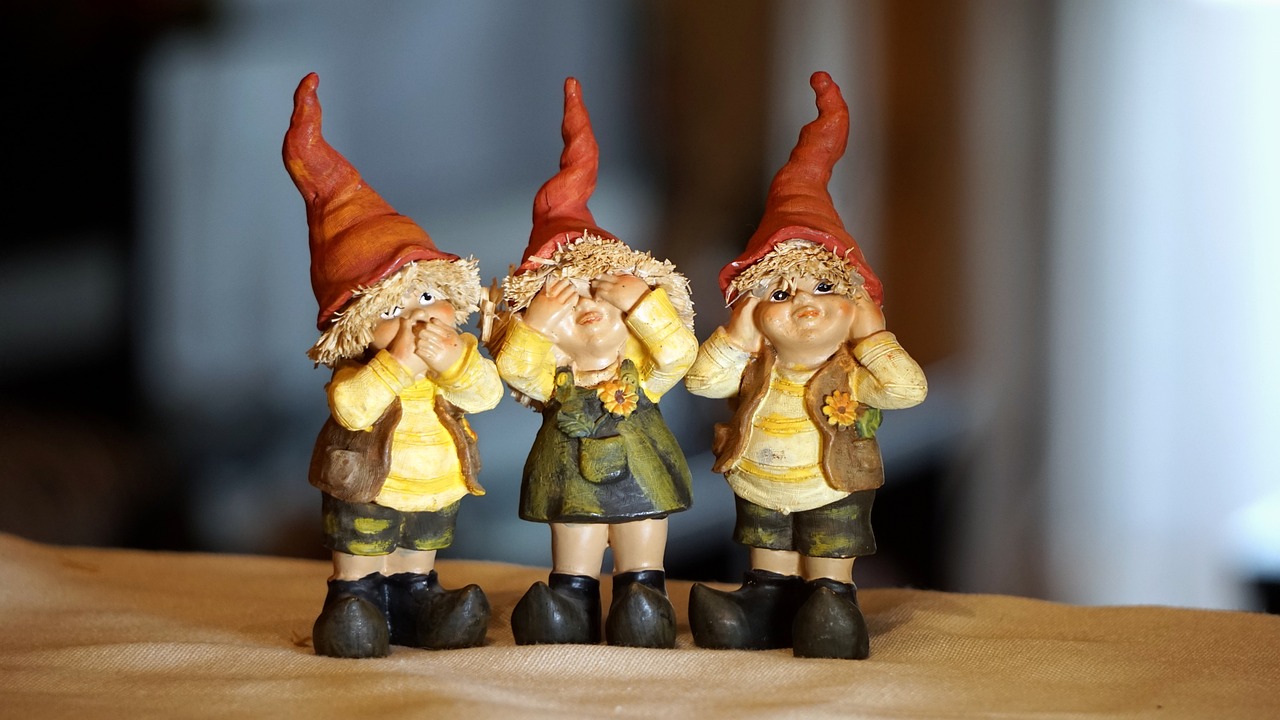
DIY Furniture Ideas
Creating your own miniature furniture is not just a fun activity; it’s a fantastic way to personalize your dollhouse and make it truly unique! Imagine stepping into a world where every tiny chair and table tells a story, crafted by your own hands. It’s like being a giant in a land of little wonders! So, let’s dive into some exciting DIY furniture ideas that will elevate your dollhouse to the next level.
First up, let’s talk about the classic miniature table. You can easily create a charming dining table using just a few wooden dowels and a flat piece of wood. Cut the dowels to your desired height for the legs, and attach them securely to the underside of the tabletop. You can even paint it in a vibrant color or stain it to mimic a rustic wooden finish. Picture this: a tiny table set for a delightful tea party, complete with miniature teacups!
Next, consider crafting miniature chairs. These can be made from the same materials as your table. A simple design could involve four legs and a backrest. You can experiment with different styles, from sleek modern lines to ornate Victorian designs. To make the chairs even cozier, add tiny cushions made from fabric scraps. This little touch not only enhances the aesthetic but also adds a layer of comfort to your dollhouse residents.
Don’t forget about storage! A miniature bookshelf can be a delightful addition to your dollhouse. Use thin strips of wood to create the frame and shelves. You can personalize it by painting it in a color that matches your dollhouse theme. Fill it with tiny books, which you can easily make by cutting small rectangles of paper and stacking them together. This not only adds character but also gives your dollhouse a lived-in feel.
If you're feeling adventurous, try your hand at making a miniature sofa. Start with a sturdy base, then use foam or fabric to create cushions. You can even use old fabric swatches to give your sofa a unique pattern. The best part? You can customize the size to fit perfectly in your dollhouse living room, ensuring it’s both functional and fabulous!
Lastly, let’s talk about accessories. Small touches like tiny picture frames, vases, or even miniature plants can breathe life into your dollhouse. You can make these items from scraps like bottle caps, buttons, or even clay. Think of it as the jewelry of your dollhouse; these little details will catch the eye and make your creation stand out.
In summary, DIY furniture for your dollhouse is all about creativity and personalization. Each piece you create not only adds functionality but also tells a story, making your dollhouse a reflection of your style and imagination. So grab your tools, unleash your creativity, and let’s get crafting!
Q: What materials do I need to start making DIY furniture for my dollhouse?
A: Basic materials include wood (like balsa or plywood), glue, paint, and fabric. You can also use recycled materials like cardboard or plastic from packaging.
Q: How can I ensure my furniture is the right scale for my dollhouse?
A: Most dollhouses are built to a specific scale (like 1:12). Use a ruler to measure your dollhouse dimensions and scale your furniture accordingly. A good rule of thumb is that a 12-inch dollhouse should have furniture that is approximately 1 inch tall for chairs and 2 inches tall for tables.
Q: Where can I find inspiration for my DIY furniture projects?
A: Inspiration can come from various sources! Look at home decor magazines, Pinterest, or even visit local furniture stores to see what styles you like. You can also join online crafting communities for ideas and support.
Q: Can I use non-wood materials for making furniture?
A: Absolutely! You can use materials like cardboard, plastic, or even metal. Just ensure they are lightweight and easy to work with for your dollhouse scale.
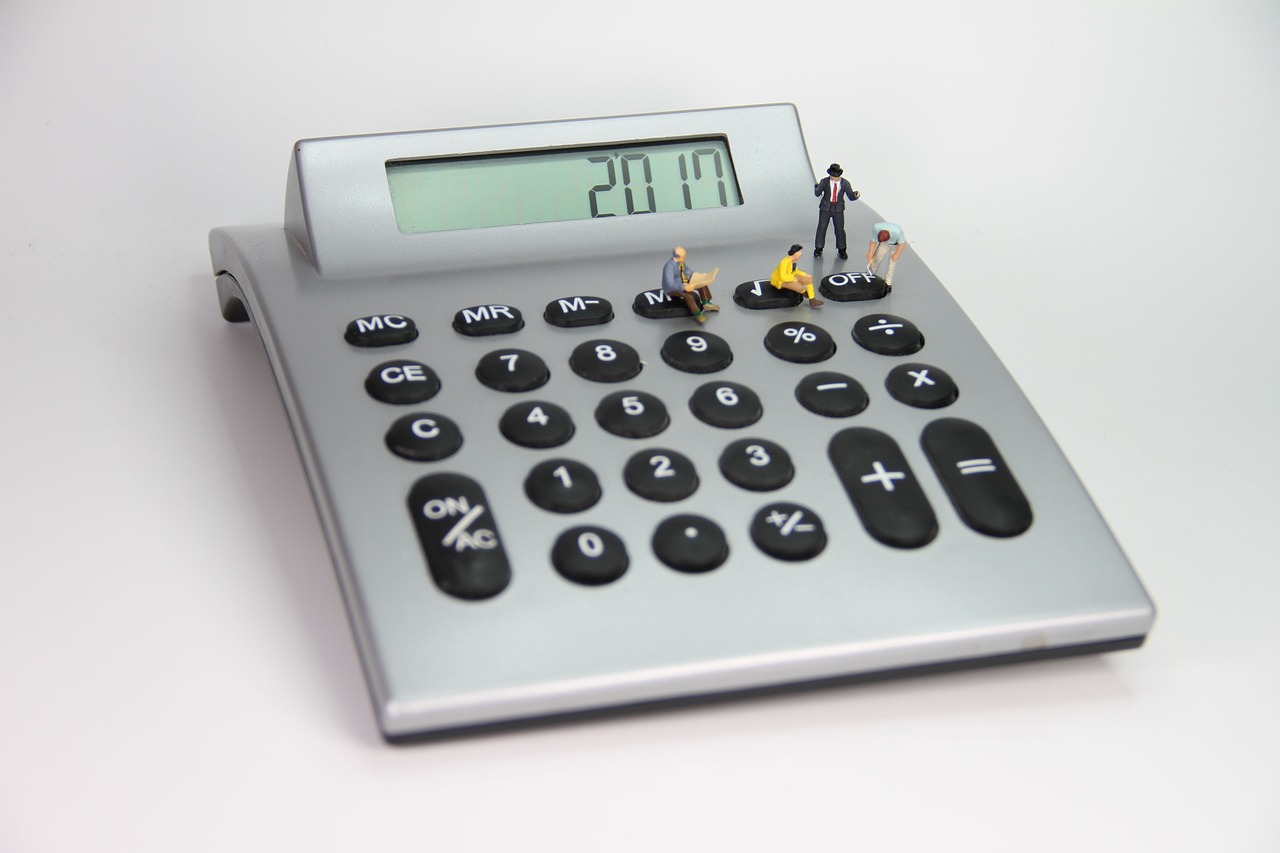
Using Miniature Accessories
Accessorizing your dollhouse is like adding the finishing touches to a masterpiece; it breathes life into your creation and transforms it into a charming space that reflects your unique style. Miniature accessories are the little gems that can elevate your dollhouse from a simple structure to a vibrant home filled with character. Whether it’s a tiny vase on a table or a miniature pet lounging in the living room, these accessories add personality and warmth.
When it comes to sourcing miniature accessories, the options are endless. You can find a plethora of items in craft stores, online marketplaces, or even in your own home! Here’s a quick list of some popular sources for miniature accessories:
- Local craft stores: Often have dedicated sections for dollhouse miniatures.
- Online retailers: Websites like Etsy or Amazon offer a vast selection of handmade and unique items.
- Thrift shops: You’d be surprised at the treasures you can find that can be repurposed.
- DIY: Creating your own accessories can be rewarding and allows for complete customization.
Creating your own miniature accessories can be an exciting and fulfilling aspect of the dollhouse building process. Think about crafting items that resonate with you. For instance, if you enjoy gardening, why not create a tiny potted plant or a miniature garden bench? The beauty of DIY is that you can tailor each piece to fit your dollhouse’s theme and your personal tastes.
Additionally, consider using everyday items as accessories. A small button can become a decorative plate, or a piece of fabric can be transformed into a cozy blanket for your miniature sofa. The key is to look at ordinary objects with a creative eye and envision how they can fit into your dollhouse world.
Don’t forget about the power of detail! Small items like tiny books, picture frames, or even miniature food can make your dollhouse feel lived-in and loved. These little touches tell a story, inviting viewers to imagine the lives of the miniature inhabitants. You might even want to create themed rooms that reflect different aspects of life, such as a cozy kitchen filled with cooking utensils or a vibrant living room adorned with family photos.
In conclusion, using miniature accessories is an essential part of dollhouse decorating. They not only enhance the visual appeal but also allow you to express your creativity and personal style. So, gather your materials, unleash your imagination, and let your dollhouse shine with character and charm!
Q: Where can I find miniature accessories for my dollhouse?
A: You can find miniature accessories at local craft stores, online retailers, thrift shops, or you can even make your own!
Q: Can I use everyday items as miniature accessories?
A: Absolutely! Everyday items can often be repurposed into unique accessories for your dollhouse, adding a personal touch.
Q: How do I create my own miniature accessories?
A: You can create your own accessories using materials like clay, fabric, or recycled items. The possibilities are endless!
Q: What are some essential accessories for a dollhouse?
A: Essential accessories might include furniture, decorative items, and household items like books, plants, and kitchenware.
Frequently Asked Questions
- What materials do I need to build a miniature wooden dollhouse?
To create your own dollhouse, you’ll need a few essential materials: quality wood (like balsa or plywood), wood glue, a craft knife, sandpaper, and a ruler. Don't forget about decorative items like paint, wallpaper, and miniature accessories to bring your dollhouse to life!
- How long does it take to build a dollhouse?
The time it takes to build a dollhouse can vary widely based on the complexity of your design and your crafting skills. A simple dollhouse might take a weekend, while a more intricate design could take several weeks. Just remember, the journey of crafting is part of the fun!
- Can I use recycled materials for my dollhouse?
Absolutely! Using recycled materials is a fantastic way to create a unique dollhouse while being eco-friendly. Consider repurposing old wood, cardboard, or even small household items for furniture and decorations. Your creativity is the only limit!
- What types of wood are best for dollhouses?
For durability and ease of use, balsa wood is a popular choice among crafters due to its lightweight nature. Plywood is another excellent option for sturdiness. If you're looking for something more unique, consider cedar or pine, which also add a lovely natural aesthetic.
- How can I make my dollhouse eco-friendly?
To build an eco-friendly dollhouse, opt for sustainably sourced wood and non-toxic paints or finishes. You can also incorporate recycled materials into your design. By making these choices, you can enjoy your crafting while caring for the planet!
- What are some ideas for decorating my dollhouse?
When it comes to decorating, the sky's the limit! You can paint the walls, add wallpaper, or even create tiny artwork. For furniture, consider DIY projects like making tables and chairs from popsicle sticks. Accessorizing with miniature plants, books, and kitchenware can also add a personal touch!
- Where can I find miniature accessories for my dollhouse?
You can find miniature accessories at craft stores, online marketplaces, or even local flea markets. Additionally, consider making your own accessories from everyday items like buttons, beads, or fabric scraps. This adds a personal flair to your dollhouse!




